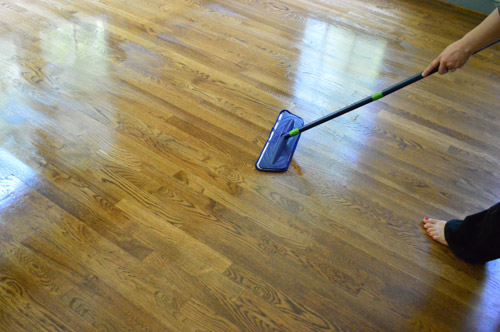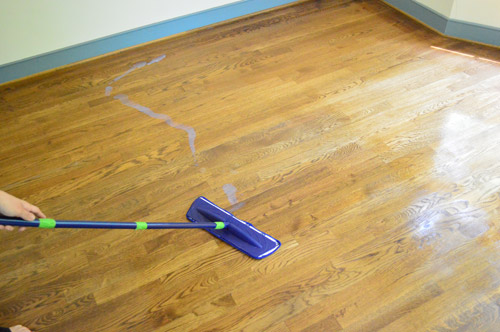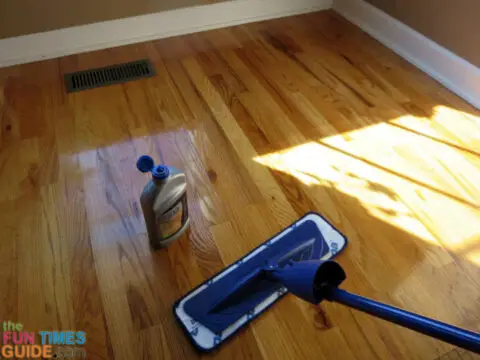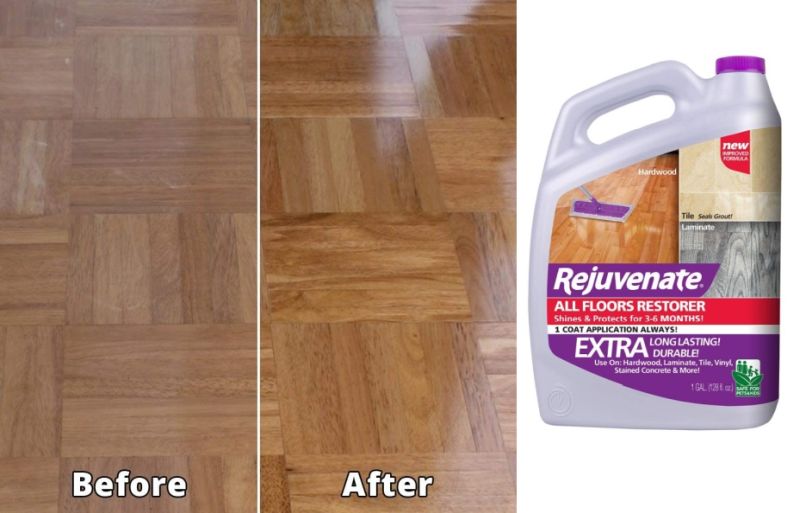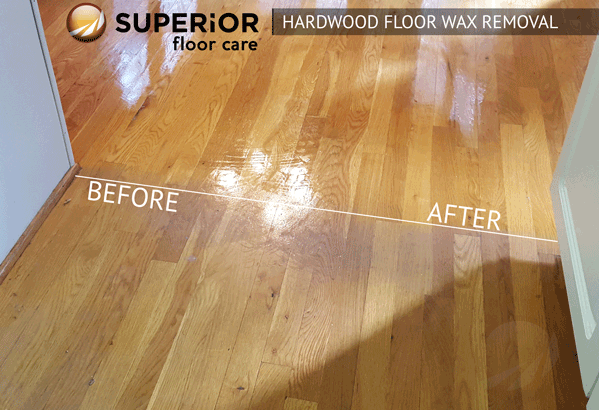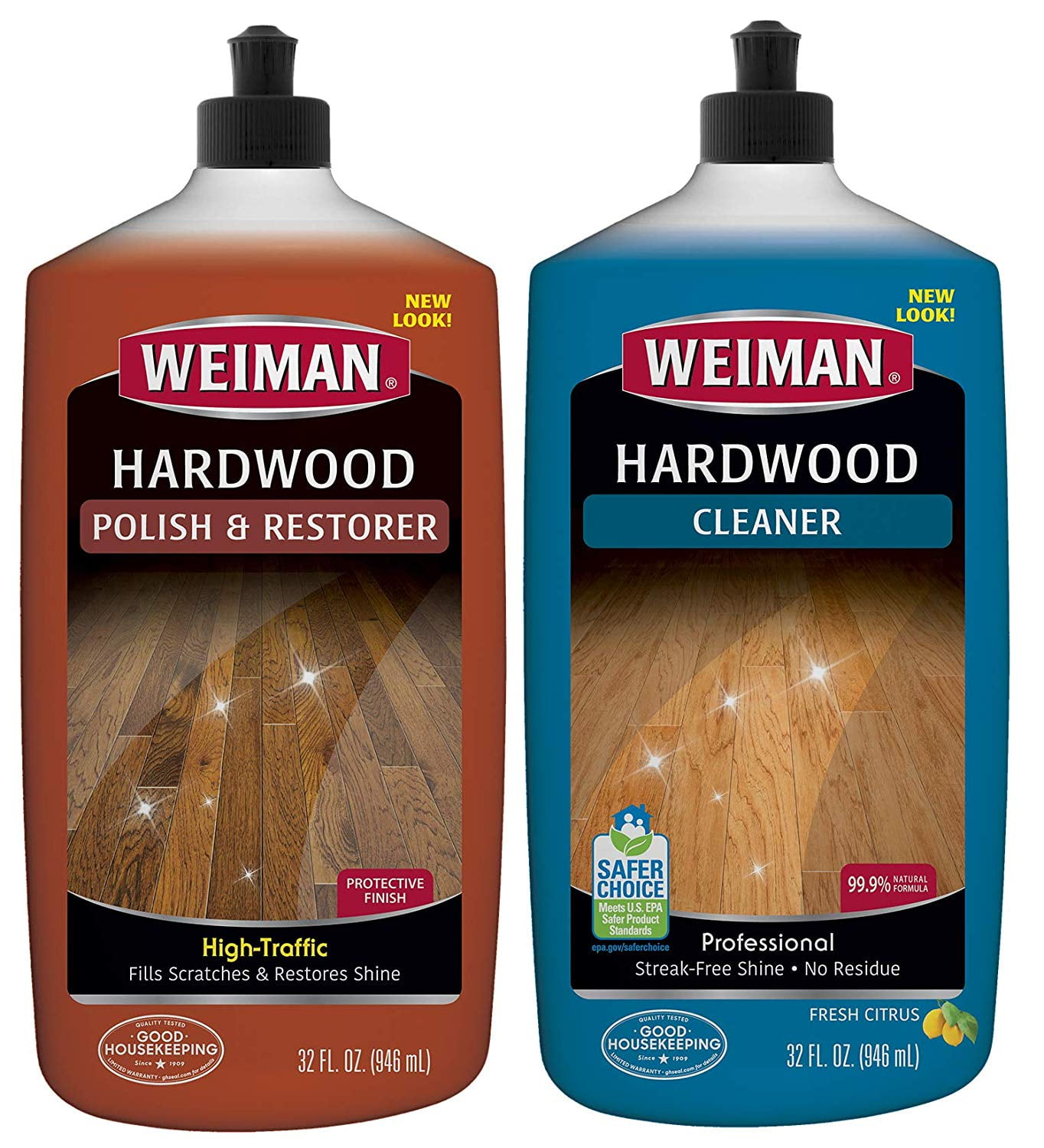Hardwood Floor Wax Polish: What Is It and Why Use It?
Hardwood floor wax polish is a vital component in the maintenance and care of hardwood floors. It serves multiple purposes, from enhancing the appearance of the wood to protecting it from damage. Wax polish is typically composed of natural waxes, such as carnauba or beeswax, combined with synthetic polymers and other additives. Here’s why you should consider using it:
- Enhances Appearance: One of the primary reasons to use hardwood floor wax polish is to give your floors a beautiful, glossy shine. The polish brings out the natural beauty of the wood, highlighting its color variations and grain patterns. This enhances the overall aesthetic appeal of your floors and adds warmth and elegance to your home.
- Protects Against Damage: In addition to enhancing appearance, wax polish also acts as a protective barrier for your hardwood floors. The hard, glossy surface created by the polish helps to seal the wood, preventing moisture, stains, and scratches from penetrating the surface. This protection prolongs the life of your floors and keeps them looking new for longer.
- Water Resistance: Wax polish provides a water-resistant barrier that repels liquid spills and prevents them from seeping into the wood. This is especially beneficial in areas prone to spills, such as kitchens and bathrooms. By preventing water damage, wax polish helps to maintain the structural integrity of your floors and prevents warping and swelling.
- Easy Maintenance: Hardwood floor wax polish creates a smooth surface that is easy to clean and maintain. Dust, dirt, and debris are less likely to adhere to the polished surface, making it simple to sweep or vacuum your floors. Additionally, occasional buffing or reapplication of wax can revive the shine and luster of your floors, keeping them looking their best.
- Eco-Friendly Option: Many hardwood floor wax polishes are made from natural ingredients, making them an eco-friendly choice for homeowners who are conscious of their environmental impact. By using wax polish instead of harsh chemical cleaners, you can maintain your floors while minimizing your carbon footprint.

Types of Hardwood Floor Wax Polish
When it comes to hardwood floor wax polish, there are several types available on the market, each with its unique characteristics and benefits. Choosing the right one for your floors depends on factors such as the type of wood, the desired finish, and personal preference. Here are some common types of hardwood floor wax polish to consider:
Paste Wax: Paste wax is one of the oldest and most traditional types of hardwood floor polish. It is typically made from a blend of natural waxes, such as beeswax or carnauba wax, mixed with solvents and other additives. Paste wax provides a durable, long-lasting finish and is ideal for high-traffic areas. However, it can be labor-intensive to apply and requires buffing to achieve a glossy shine.
Liquid Wax: Liquid wax is a more modern alternative to paste wax, offering similar benefits with easier application. It is typically made from a blend of synthetic polymers and other additives dissolved in a solvent base. Liquid wax is easy to apply with a mop or applicator pad and dries quickly to a glossy finish. It is suitable for all types of hardwood floors and provides excellent protection against moisture and wear.
Water-Based Wax: Water-based wax polish is an environmentally friendly option that is becoming increasingly popular among homeowners. It is made from natural waxes and polymers suspended in a water-based solution, making it safe for both the environment and indoor air quality. Water-based wax polish dries quickly, has a low odor, and is easy to clean up with water. It provides a durable finish that resists scratches and stains while enhancing the natural beauty of the wood.
Oil-Based Wax: Oil-based wax polish is another traditional option that offers deep penetration and long-lasting protection for hardwood floors. It is made from a blend of natural oils, such as linseed or tung oil, mixed with solvents and other additives. Oil-based wax polish penetrates deeply into the wood, nourishing and protecting it from within. It provides a rich, warm finish that highlights the natural grain of the wood and is ideal for older or worn floors in need of rejuvenation.
Spray Wax: Spray wax is a convenient option for quick touch-ups and spot treatments. It is typically packaged in aerosol cans for easy application and is ideal for maintaining the shine and luster of hardwood floors between regular waxing. Spray wax can be applied directly to the floor and buffed with a soft cloth or mop to restore shine and remove surface dirt and debris.
How to Apply Hardwood Floor Wax Polish
Applying hardwood floor wax polish may seem daunting, but with the right tools and techniques, you can achieve a professional finish that enhances the beauty and durability of your floors. Follow these step-by-step instructions for the best results:
Prepare the Floor: Start by thoroughly cleaning the hardwood floor to remove any dirt, dust, and debris. Sweep or vacuum the floor to ensure it is free of loose particles. For stubborn stains or residue, use a hardwood floor cleaner according to the manufacturer’s instructions. Allow the floor to dry completely before proceeding.
Choose the Right Wax Polish: Select a hardwood floor wax polish that is suitable for your specific type of flooring and desired finish. Consider factors such as the type of wood, the level of sheen you prefer, and any special requirements, such as water resistance or eco-friendliness. Read the manufacturer’s instructions carefully before application.
Apply the Wax Polish: Pour a small amount of wax polish onto the floor, spreading it evenly with a clean, lint-free cloth or applicator pad. Work in small sections, overlapping each area slightly to ensure uniform coverage. Avoid applying too much polish at once, as this can lead to streaks or uneven drying.
Buff the Surface: Once the entire floor is coated with wax polish, use a buffing machine or a clean, dry cloth to buff the surface to a high shine. Move the buffing machine or cloth in circular motions, applying gentle pressure to evenly distribute the wax polish and achieve a glossy finish. Take care not to buff too vigorously, as this can cause streaking or damage to the finish.
Allow to Dry and Cure: Allow the wax polish to dry and cure according to the manufacturer’s instructions. This typically involves waiting for the polish to dry to a haze before buffing to a shine. Depending on the type of wax polish used, curing times may vary, so be sure to follow the recommended drying times for best results.
Repeat as Needed: For optimal results, repeat the waxing process as needed to maintain the shine and protection of your hardwood floors. Over time, foot traffic and other factors may cause the wax polish to wear down, necessitating reapplication. Regular maintenance will help to keep your floors looking their best for years to come.
Maintenance Tips
Maintaining hardwood floors that have been treated with wax polish is essential to preserve their beauty and prolong their lifespan. Here are some maintenance tips to help you keep your hardwood floors gleaming:
Regular Cleaning: Sweep or vacuum your hardwood floors regularly to remove dirt, dust, and debris that can scratch the surface. Use a soft-bristled broom or a vacuum cleaner with a hardwood floor attachment to prevent scratches. Avoid using abrasive cleaners or rough brushes that can damage the wax polish.
Use Floor Mats and Rugs: Place floor mats and rugs in high-traffic areas, such as entryways and hallways, to prevent dirt and grit from being tracked onto the floors. This helps to minimize wear and tear on the wax polish and reduces the need for frequent cleaning. Be sure to shake out or vacuum mats and rugs regularly to prevent dirt buildup underneath.
Wipe Up Spills Immediately: Accidental spills should be wiped up immediately to prevent moisture from penetrating the wood and damaging the wax polish. Use a clean, damp cloth to blot up spills, taking care not to rub or scrub the affected area, which can spread the spill and cause further damage. Dry the area thoroughly with a clean, dry cloth.
Avoid Excessive Water: While hardwood floors treated with wax polish are water-resistant, excessive moisture can still cause damage over time. Avoid wet mopping or using excessive amounts of water when cleaning your floors, as this can lead to warping, swelling, and discoloration. Instead, use a damp mop or microfiber cloth lightly dampened with water or a hardwood floor cleaner.
Reapply Wax Polish as Needed: Over time, the wax polish on your hardwood floors may wear down due to foot traffic and other factors. To maintain the shine and protection of your floors, reapply wax polish as needed. Follow the manufacturer’s instructions for application and drying times, and be sure to buff the surface to a high shine for the best results.
Protect Furniture Legs: Place felt pads or furniture glides under the legs of furniture to prevent scratches and dents on the hardwood floors. Avoid dragging heavy furniture or sharp objects across the floor, as this can damage the wax polish and leave permanent marks.
Common Mistakes to Avoid When Using Hardwood Floor Wax Polish
While hardwood floor wax polish is an effective way to protect and enhance your floors, there are some common mistakes that homeowners make when using it. Avoiding these pitfalls will help you achieve the best results and keep your floors looking their best. Here are some common mistakes to avoid:
Applying Too Much Wax: One of the most common mistakes when using hardwood floor wax polish is applying too much product at once. This can lead to streaks, smudges, and an uneven finish. Instead, apply a thin, even coat of wax polish and buff it to a high shine for best results.
Skipping Surface Preparation: Proper surface preparation is essential for achieving a professional finish with hardwood floor wax polish. Skipping steps such as cleaning, sanding, or stripping old wax can result in poor adhesion and a dull finish. Take the time to prepare the surface properly before applying wax polish for optimal results.
Using the Wrong Type of Wax: Not all wax polishes are created equal, and using the wrong type for your specific type of hardwood floors can result in poor performance and damage. Be sure to choose a wax polish that is suitable for your floors, taking into account factors such as the type of wood, finish, and desired level of shine.
Not Buffing Properly: Buffing is an essential step in the waxing process, as it helps to evenly distribute the polish and achieve a glossy shine. Not buffing the wax polish properly can result in a dull, streaky finish. Use a buffing machine or a clean, dry cloth to buff the surface in circular motions until the desired shine is achieved.
Applying Wax to Wet or Damp Floors: Applying wax polish to wet floors can trap moisture in the wood and lead to mold, mildew, and other damage. Be sure to wait until the floors are completely dry before applying wax polish to ensure proper adhesion and prevent moisture-related problems.
Neglecting Regular Maintenance: Even the best-applied wax polish will eventually wear down over time, especially in high-traffic areas. Neglecting to reapply wax polish or performing regular maintenance can result in dull, worn-looking floors. Be sure to follow a regular cleaning and maintenance routine to keep your hardwood floors looking their best.
Weiman Wood Floor Polish and Restorer 32 Ounce (2 Pack) – High-Traffic Hardwood Floor, Natural Shine, Removes Scratches, Leaves Protective Layer
Waxing Wood Floors in Orange County Hardwood floor wax, Hardwood
Waxing Hardwood Floors 101: Benefits and Pro Tips
How To Clean, Gloss Up, And Seal Dull Old Hardwood Floors Young
Using Bona Refresher As A Floor Polish Instead Of Using Floor Wax
How to polish hardwood floors with Bona
Rejuvenate Professional Wood Floor Restorer With High Gloss Finish
Hardwood Floor Cleaning Lexington KY
Weiman Floor Liquid Wood Cleaner u0026 Polish, Fresh and Citrus Scent, 32 Fluid Ounce, 2 Pack
Related Posts:



